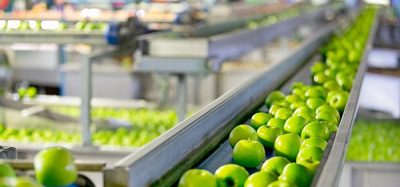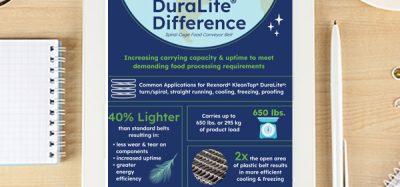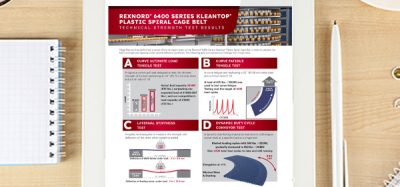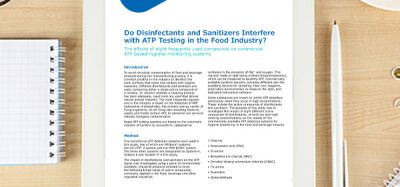Higher standards for hygiene
- Like
- Digg
- Del
- Tumblr
- VKontakte
- Buffer
- Love This
- Odnoklassniki
- Meneame
- Blogger
- Amazon
- Yahoo Mail
- Gmail
- AOL
- Newsvine
- HackerNews
- Evernote
- MySpace
- Mail.ru
- Viadeo
- Line
- Comments
- Yummly
- SMS
- Viber
- Telegram
- Subscribe
- Skype
- Facebook Messenger
- Kakao
- LiveJournal
- Yammer
- Edgar
- Fintel
- Mix
- Instapaper
- Copy Link
Posted: 20 February 2009 | Sarah Krol, Business Unit Manager, NSF | No comments yet
Consumers today make well-informed choices about the food products they purchase. Savvy shoppers have access to a wealth of information and select their products based on brand recognition, nutritional labelling and differentiating attributes such as Certified organic, allergen-free and fair-trade. The food processing industry must continually evolve to keep pace with consumer expectations for safe, nutritional and innovative food products. For example, the demand for ready-to-eat food stuffs requires exceptional standards for cleanliness and hygiene in a food plant.
Consumers today make well-informed choices about the food products they purchase. Savvy shoppers have access to a wealth of information and select their products based on brand recognition, nutritional labelling and differentiating attributes such as Certified organic, allergen-free and fair-trade. The food processing industry must continually evolve to keep pace with consumer expectations for safe, nutritional and innovative food products. For example, the demand for ready-to-eat food stuffs requires exceptional standards for cleanliness and hygiene in a food plant.
Consumers today make well-informed choices about the food products they purchase. Savvy shoppers have access to a wealth of information and select their products based on brand recognition, nutritional labelling and differentiating attributes such as Certified organic, allergen-free and fair-trade. The food processing industry must continually evolve to keep pace with consumer expectations for safe, nutritional and innovative food products. For example, the demand for ready-to-eat food stuffs requires exceptional standards for cleanliness and hygiene in a food plant.
The popularity of organics and foods free of milk, soy, gluten, egg and nut allergens means that manufacturers must implement strict measures for ingredient traceability and segregation. The rising importance of sustainability and waste reduction has created demand for biodegradable, plant-based packaging, resulting in redesigned processes and machinery. As a consequence, modern food facilities and the processing equipment used within them are increasingly automated and complex. This greater reliance on innovative machinery design, automation and integration has prompted industry and regulators alike to recognise the importance of using safe, non-toxic, properly evaluated food grade lubricants to maintain food equipment.
Lubricants are the key
Today, food grade lubricants are essential components of food handling equipment. Lubricants, greases, oils and hydraulic fluids are needed to protect machinery and moving parts against wear and tear, to dissipate heat caused by friction and to provide sealing effects. Proper use of lubricants in a food facility by trained personnel allows maximum utilisation of food equipment under harsh environmental conditions such as extreme heat, cold and humidity. Lubricants must also function effectively with exposure to pressurised water, steam condensate and biological agents. However, these lubricants may pose a potential heath risk if cross-contamination with food products occurs. One method of mitigating this risk is to incorporate sanitary equipment design into facility planning, but in reality, the potential for contact of the lubricant with the food product cannot be entirely negated. Some level of contamination will likely occur from leaks or drips off of chains, conveyor belts and gearboxes. Oil and grease can be exposed on equipment such as can seamers, bakery ovens and at other critical points of operation. Clearly, the use of traditional industrial oils under these conditions poses a health and safety risk. The use of food grade lubricants is a simple and logical alternative. In order to effectively minimise the hazard potential associated with product contamination by the lubricant, only lubricants that have been independently verified by a qualified third-party should be permitted in the food processing environment.
Chemical hazard control
HACCP, or Hazard Analysis and Critical Control Point analysis, focuses on identifying and preventing food contamination hazards in the early stages of processing. The HACCP approach requires plant operators to develop and implement safety measures along with a system to intercept potential contamination points. Exposed lubricants or greases on machinery present a contamination risk and thus a critical control point (CCP). The use of food grade lubricants, combined with rigorous cleaning, maintenance and inspection procedures should be incorporated into each food or beverage facility’s HACCP plan. The use of food grade lubricants in conjunction with an effective HACCP plan provides operators with a powerful means of minimising the potential for chemical and bacterial contamination in food plants.
Regulations for food grade lubricants
Currently, few governments regulate the use of food grade or incidental contact lubricants. Today, no European regulations exist for the formulation of incidental contact lubricants used in food processing facilities. Most companies formulate food grade lubricants using ingredients that are compliant to criteria established in Title 21 of the US Code of Federal Regulations (21 CFR). In addition, lubricant manufacturers can apply for voluntary registration of their lubricants with NSF International, an independent standards development, testing and certification body.
NSF registration
Previously in the United States, FDA regulations for formulating food grade lubricants were managed by the US Department of Agriculture (USDA). The USDA reviewed and authorised chemical products and processing aids, including lubricants, acceptable for use in food handling facilities. Authorisation of a product by the USDA ensured that the US Food Safety Inspection Services would approve its use in meat and poultry operations during inspections. In 1999, NSF International, an independent non-governmental, not-for-profit organisation assumed responsibility for evaluating food grade lubricants and other food processing substances. Working in direct collaboration with the USDA, NSF captured all previous review requirements and drafted a single criteria document known as the NSF Registration Guidelines for Nonfood Compounds and Proprietary Substances. Today, NSF’s Registration and Listing Program is a globally recognised resource for food grade lubricants. Under the current program, lubricants are commonly categorised as:
- H1 – acceptable for incidental food contact
- H2 – not suitable for contact with edible products
- H3 – for direct food contact and formulated with edible oils (corn, cottonseed, soybean)
Food grade lubricants typically consist of one of three types of base oils: mineral oil, synthetic oils such as PAOs (polyalphaolefins), PAGs (polyalkalene glycols) and silicones, and various vegetable oils. Most lubricants contain small amounts of performance enhancing additives that improve the technical function of the lubricant by increasing load capabilities, fluidity and inhibiting oxidation.
The formulations of NSF registered H1 lubricants meet the requirements set forth by the FDA in 21 CFR 178.3570. The lubricant must be formulated in such a manner that if cross-contamination with the food product occurs, the residues would be innocuous with respect to the health of the consumer. In addition, NSF registered lubricants undergo a rigorous assessment to verify that product labels are true and accurate and make no misleading safety claims. Lubricants must be traceable back to the supplier by clearly displaying the product and company name on the label. NSF registered products also display the blue circle NSF registration mark, lubricant category code (ex. H1) and unique registration number assigned by NSF on the product label. This information allows end-users and health authorities to quickly verify a product’s current registration status via the official online listing www.nsfwhitebook.org.
A new standard: ISO 21469
In recognising the greater need for the global standardisation of requirements for incidental contact lubricants, the International Organisation for Standardisation (ISO) recently developed and published a voluntary standard: ISO 21469: 2006(E) – Safety of machinery – Lubricants with Incidental Product Contact. ISO 21469 specifies the hygiene requirements for the formulation, manufacture and use of lubricants, which may encounter products during manufacturing or processing. This international standard applies beyond food applications and includes lubricants used for processing specialty products such as cosmetics, pharmaceuticals and animal feed, where hygiene is of particular concern.
ISO 21469 requires lubricant manufacturers to develop a hygiene strategy and to consider chemical, physical and biological hazards in the context of the lubricant use. The ISO standard also requires that the lubricant manufacturer complete a risk assessment considering various sources of lubricant contamination.
In 2008, NSF initiated a Certification program for food grade lubricants that meet the requirements of ISO 21469. NSF Certified lubricants undergo a thorough evaluation that encompasses all requirement of the ISO standard, including risk assessment analysis, product testing, formulation and label review. In addition, production facilities are audited by NSF to confirm that good manufacturing practices are followed during the lubricant blending, packaging and transport. The ISO 21469 standard appeals to lubricant manufacturers seeking compliance to a single, internationally accepted standard that is comprehensive enough to address lubricants used across multiple industries and product sectors.
Already, international regulatory agencies are responding to the new ISO standard. The Emirates Standardisation & Meteorology Authority (ESMA), the official federal body in the United Arab Emirates, announced adoption of ISO 21469 as the mandatory requirement for incidental contact lubricants earlier this year.
Facing the future
There is little doubt that the future of food processing lies in the ability of manufacturers to increase efficiency and automation, while effectively reducing the potential for chemical and biologic contamination. This will become increasingly important as global food companies seek to expand technology and production in developing regions. As food facility operators worldwide are challenged with maintaining production efficiency and complying with global food safety standards, using approved food grade lubricants to managing critical control points will become increasingly important. For most food producers and retailers, the benefits of avoiding such risk simply outweigh the costs.








